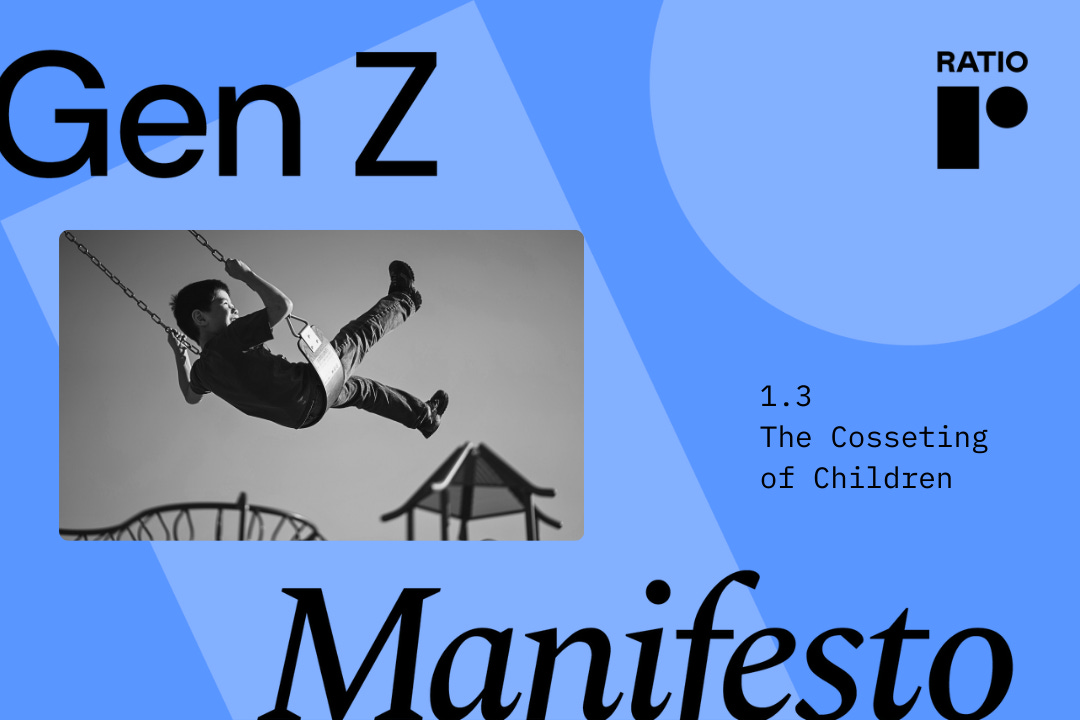Week 3: The Cosseting of Children
Taking a generational approach involves exploring differences in the social, cultural and economic context in which children are raised.
Gen Z have experienced more restrictions on their freedom to explore the world, to make mistakes, and learn from those mistakes.
From the 1990s onwards, in economically developed countries, parents began to spend more time with their children. They were less likely to leave their children unattended. And they were more mindful of the risks to their children1.
This marked a break with previous generations. Boomers and Gen X were mostly roaming the streets from the age of seven years onwards. Parents worried less because neighbours were part of an informal supervision team.
The parents of Boomers and Gen X were laissez-faire out of custom, it is how they were raised, or necessity, putting bread on the table didn’t always allow for ‘quality time with the kids’.
But more liberal parenting and placing trust in neighbours turned out to be a smart choice. When Rob Sampson and colleagues2 studied the phenomenon and gave it a name -collective efficacy- they found it reduced crime. James Coleman and colleagues3 found that the moderating effects of community on children’s behaviour led to better school outcomes.
Ellen Beate Hansen Sandseter and colleagues4 drill down into how experiences of hazardous play prepare children for life. They find that the thrills and excitement of fun that is uncertain and risks physical injury -at great heights, at fast speeds, involving fire or getting lost- builds resilience.
Jonathan Haidt -whose name will reappear many times in this substack- says normative risk taken by children builds their ’physical and psychological immune system’.5
By the late 90s, when Gen Z came along, parenting was shifting from encouraging freedom to -a Silent Generation term- coddling.
They drove their children to school. They picked them up from school and stayed with them during after-school activities. And then delivered them to play dates -now scheduled and vetted.
Public systems bought into this cultural shift and safeguarding was born. The idea that parents or extended family or neighbours, let alone the children themselves, might be best placed to ‘risk assess’ was slowly forgotten.
This restricted context for bringing up children has had consequences. As Jonathan Haidt observes in his book The Anxious Generation, parents and systems folk worry a lot about children tottering on the apex of a slide in a carefully designed safe play area but hardly at all about the hours spent alone in a bedroom on a video game -a pastime that does nothing for either the physical or the psychological immune system.
1 O’Brien, J. and Smith, J,. Childhood transformed: risk perceptions and the decline of free play’, British Journal of Occupational Therapy, 65 (3), 123-128, 2002.
2 Sampson, R.J., Raudenbush
S.W. and Earls, F., Neighbourhoods and violent crime, Science, 277, 918-924, 1997
3 Coleman, J, Hoffer, T., and Kilgore, S. Cognitive outcomes in public and private schools, Sociology of Education 55, no. 2, 65–76, 1982
4 Hansen Sandseter, E. B., Kleppe, R., and Ottesen Kennair, L. E. Risky play in children’s emotion regulation, social functioning, and physical health: an evolutionary approach. International Journal of Play, 12(1), 127–139., 2023
5 Haidt, J., The Anxious Generation, Allen Lane, 2024.






